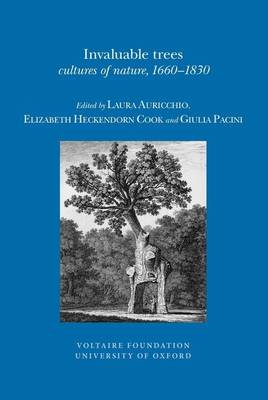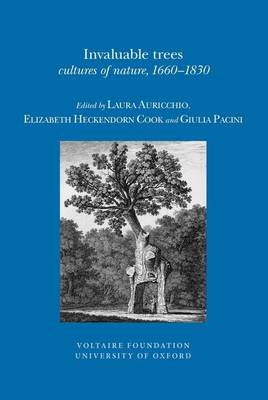
- Afhalen na 1 uur in een winkel met voorraad
- Gratis thuislevering in België vanaf € 30
- Ruim aanbod met 7 miljoen producten
- Afhalen na 1 uur in een winkel met voorraad
- Gratis thuislevering in België vanaf € 30
- Ruim aanbod met 7 miljoen producten
Zoeken
Invaluable Trees
Cultures of Nature, 1660-1830
€ 92,00
+ 184 punten
Omschrijving
Trees and tree products have long been central to human life and culture, taking on intensified significance during the long eighteenth century. As basic raw material they were vital economic resources, objects of international diplomatic and commercial exchange, and key features in local economies. In an age of ongoing deforestation, both individuals and public entities grappled with the complex issues of how and why trees mattered. In this interdisciplinary volume, contributors build on recent research in environmental history, literary and material culture, and postcolonial studies to develop new readings of the ways trees were valued in the eighteenth century. They trace changes in early modern theories of resource management and ecology across European and North American landscapes, and show how different and sometimes contradictory practices were caught up in shifting conceptions of nature, social identity, physical health and moral wellbeing. In its innovative and thought-provoking exploration of man's relationship with trees, Invaluable trees: cultures of nature, 1660 -1830 argues for new ways of understanding the long eighteenth century and its values, and helps re-frame the environmental challenges of our own time.
Specificaties
Betrokkenen
- Uitgeverij:
Inhoud
- Aantal bladzijden:
- 386
- Taal:
- Engels
- Reeks:
- Reeksnummer:
- nr. 2012
Eigenschappen
- Productcode (EAN):
- 9780729410489
- Verschijningsdatum:
- 6/08/2012
- Uitvoering:
- Paperback
- Formaat:
- Trade paperback (VS)
- Afmetingen:
- 156 mm x 233 mm

Alleen bij Standaard Boekhandel
+ 184 punten op je klantenkaart van Standaard Boekhandel
Beoordelingen
We publiceren alleen reviews die voldoen aan de voorwaarden voor reviews. Bekijk onze voorwaarden voor reviews.







